- Apply
- Visit
- Request Info
- Give
Our Tears Are Sweet, Our Laughter Venomous
Fourteen Iranian-American Artists
August 23 - October 8, 2021; Opening reception September 9, 2021, 4 - 6 PM
Our Tears Are Sweet, Our Laughter Venomous is an exhilarating exploration of the work of twelve women artists of Iranian descent who challenge American media’s portrayal of Iran notable only for its extremism and anti-American policies, while ignoring the distinguished 2500 years history of Persian culture.[i] Their art embodies a democratic ecosystem where resistance is nurtured, and alternative destinies are proclaimed. Though they work within the American branch of the Western art canon, their work is deeply inflected by memories of a land to which most fear returning.
These artists negotiate their own distinct positions, whether aesthetic or political, and do so in America’s socially warped post-pandemic landscape. While politics is key to understanding much of their work, and its reception, they deal with politics indirectly – through poignant and exquisite self-portraits, landscapes, or abstract imagery. They draw from Persia’s rich aesthetic tradition to convey political messages. They converse in a seductive language that can be understood across geographic and cultural boundaries. Minoo Emami literally begins her work with a dialog between women who were on both sides of the Iran-Iraq war. “Each woman tells me their personal story, creating a bond that influences my work.”[ii] Samira Abbassy reflects on her multiple cultural and geographic belongings: “We are all the product of cultural cross pollination.” [iii]
Our Tears Are Sweet, Our Laughter Venomous is a translated line from a poem by Simin Behbahani (1927 - 2014), the national poet of Iran, who is known as her country’s pre- and post-revolutionary “lioness of dissent,”[iv] and "the unacknowledged legislator of the world."[v] The poem is a response to the crushing casualties of the eight-year war with Iraq. Minoo Emami focuses on the long-term implications of that war. She casts porcelain limbs that are exquisitely decorated with beads and inscribed in gold with Persian script – reminders of the thousands who will never recover from this war. Emami explains: “I have reimagined and transformed the permanent consequences of war and its aftermath from my personal life into art. With the portrayal and utilization of used prostheses, I transform the harsh realities of war into objects of beauty.” Both Emami and Behbahani believe that the country and its people will be reborn. ….like arborists with fruit trees, “we are busy grafting.”[vi] There is no better metaphor for our exhibition!
Our Tears Are Sweet, Our Laughter Venomous may, at first glance, sound overly sensuous and melodramatic. In fact, Behbahani is celebrated for her use of the Ghazal – an Arabic verse form dating to the 7th century, written in decidedly elevated and ornate language and associated with romantic love.[vii] Anahita Vossoughi shared, “Venom can be both a poison and an antidote….Tears are a release of love, hate, confusion, anxiety, joy, and vulnerability. The contradictions and loops back that Simin Behbahani entices us through. It is a strategy I return to time and again in my practice, with the goal of making work that can be seen through a social, political and emotional lens simultaneously.”[viii] For me, this line exquisitely captures the sensitivity, passion, and hard work of each artist in this exhibition.
Zahra Nazari, Nazanin Naroozi, Yasaman Moussavi, and Azadeh Hussaini render landscapes of memory: Nazari’s are architectural – she paints deconstructed fusions between traditional Persian buildings and Frank Gehry’s signature wave-like forms; Naroozi arranges archival photos of family gatherings into art works redolent of estrangement; Hussaini sculpts landscapes carved from stacked news pages that reflect on our media oversaturation; Moussavi deploys large handmade paper installations that reflect the significance of Persian courtyards as islands of intellectual leisure within the bustling cityscape. They were all born after the war. They are allprogenies of Iran’s endurance and renewal.
Samira Abbassy, Azita Moradkhani, and Bahar Sabzevari speak to the diasporic experience of living between two worlds, and the multiple roles they must perform. Abbassy posits a question: “Who would I have been if I had never emigrated, and are there any parts of myself that are still untouched by the two migrations of my life?”[ix] Moradkhani explains that she is responding to the conditions of vulnerability and violence that experienced by women in post-revolutionary Iran. Sabzevari contends, “I think every woman is a queen, which is why in my self-portraits I am adorned with a crown.”[x]
Roya Farassatt, Anahita Vossoughi, Arghavan Khosravi and Afarin Rahminifar address both geo and body politics – examining how bodies are fashioned, imagined, and represented by the self and others in American society. They take on the great challenge of following in the steps of Western artists: Farassatt cites the influence of Brancusi in her fluidly formed, large welded metal wall sculptures; Vossoughi references Hans Bellmer’s sculptures and photographs of female fetish dolls.[xi] Khosravi’s paintings are reminiscent of De Chirico’s unsettling authority and uncanny juxtapositions, while Rahminifar speaks of the liberation learned from Sufi poets.[xii] Bahar Sabzevari lifts Frida Khalo into a role model. A tour de force of classical technique, avid introspection and cultural allusiveness define these artists.
Our Tears Are Sweet, Our Laughter Venomous is also a personal effort. This exhibition touches on my own post-diasporic and post-Soviet experience, and its entanglement in Russian-Iranian history. Tsarist Russia occupied Iran until the early 20th century, an occupation continued by the Bolsheviks. For Russian politicians, Iran is an alter ego – one on which they project their idealized view of Russia as a conservative, religious state that brutally combats dissent, blasphemy, and homosexuality.[xiii] I recoil at the similarities of these two political regimes, and I am honored to welcome these artists who continue to suffer, as do I, from the psychic legacies of our respective anti-modernist homelands. We are diasporists, fleeing haunting memories and reflecting on the complexity of our allegiances. The power, passion, and resilience of these artists do honor to the prophetic words of Simin Behbahani, whose poetry provided the title for this exhibition.
Our Tears Are Sweet, Our Laughter Venomous follows in the footsteps of the 2009, landmark exhibit, Iran Inside Out: Influences of Homeland and Diaspora on the Artistic Language of Contemporary Iranian Artists, which I visited at NYC’s Chelsea Museum of Art.[xiv] Traditional visual language was a common reference throughout the display of 56 artists. Our exhibition escapes such ethnographic focus, informed by what I have learned in the intervening years from post-colonial theorists such as C. L. R. James, W. E. B. Du Bois, and James Baldwin. They taught me that Western modernity is only one mode of artistic expression. The multi-faceted and non-linear path of modern and contemporary Iranian art has been intriguing local curators and critics in recent years.
Many more exhibitions will be required to fill the gaps in our information about Iranian culture; exhibitions that will nourish the democratic space these artists are building. Living through times lacking in nuance and dialogue, Our Tears Are Sweet, Our Laughter Venomous invites a larger public to to immerse themselves is a constellation of complex and urgent visions rooted in tears and laughter, and the iconography of many denominations.
Acknowledgments: I would like to thank Eastern President, Dr. Elsa Nunez for her continued support of art on campus, and Provost Dr. Salka for this thoughtful supervision. Many thanks to my co-curator Afarin Rahmanifar, Assistant Professor of Painting at Eastern for introducing the idea of this exhibition to me, and for including her work in this exhibition; Mark McKee, the Gallery’s Administrative Assistant for his inventive installation process; the artists who enlighten me with their vision. Maryam Ghoreishi for her thoughtful references. Kudos to our tireless gallery workers: Amanda Ouk and Megan Starbird for their research. With appreciation of my dear husband for his patience and editorial guidance.
Julia Wintner, coordinator of Eastern Art Gallery, 2021.

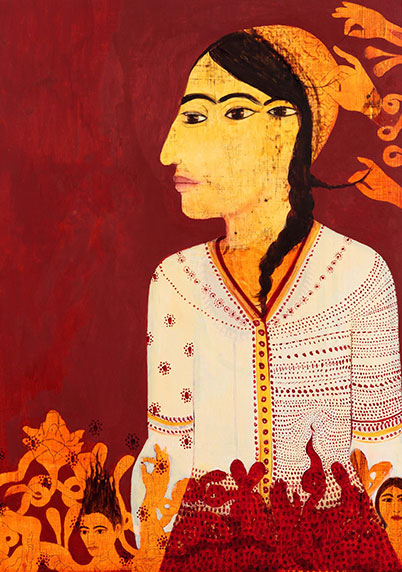
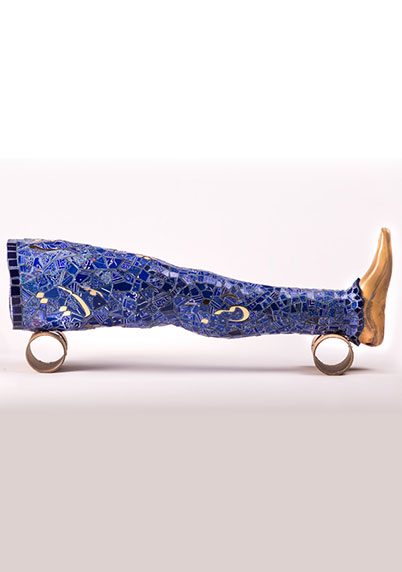
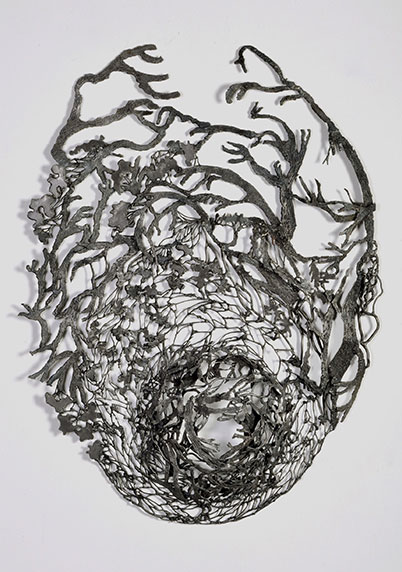
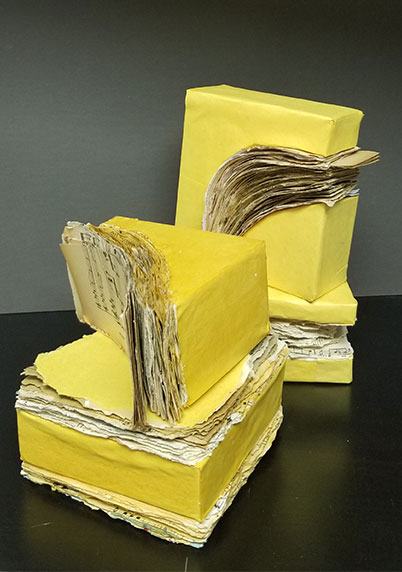

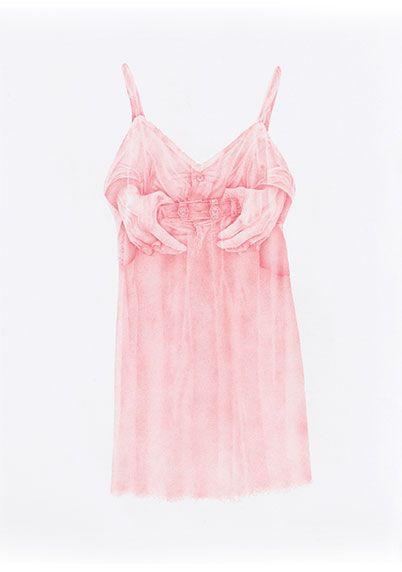
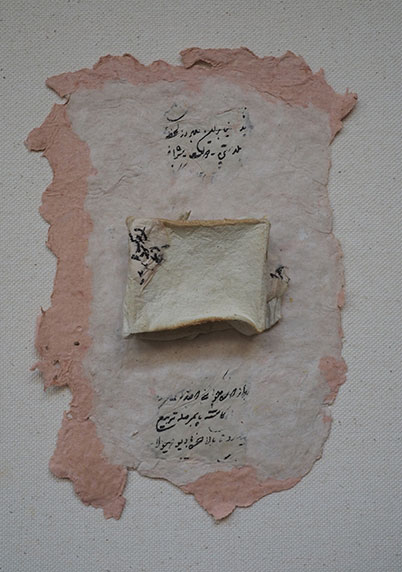

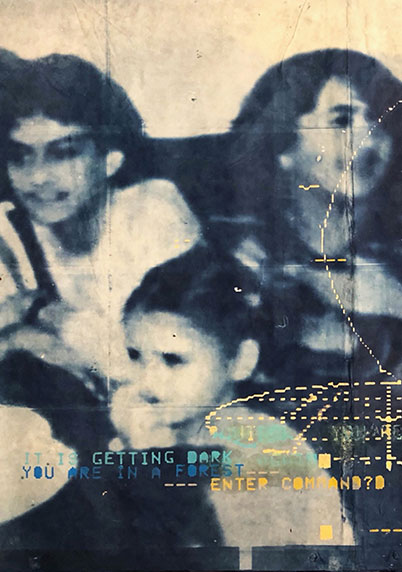
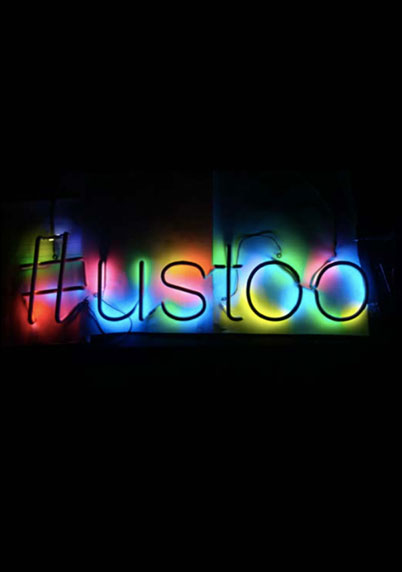
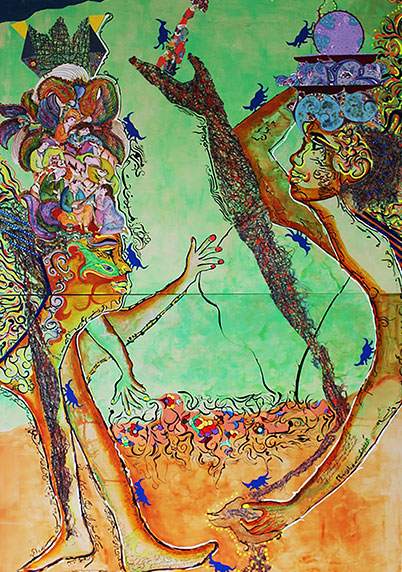
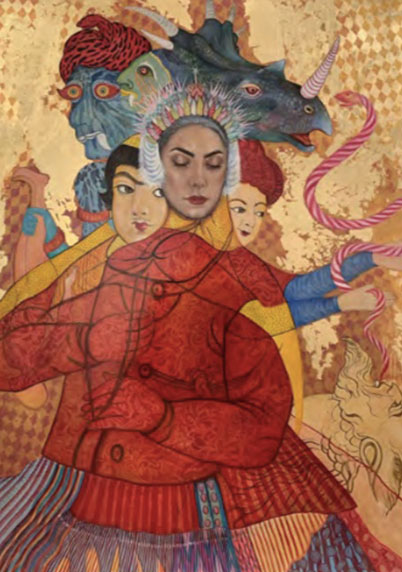
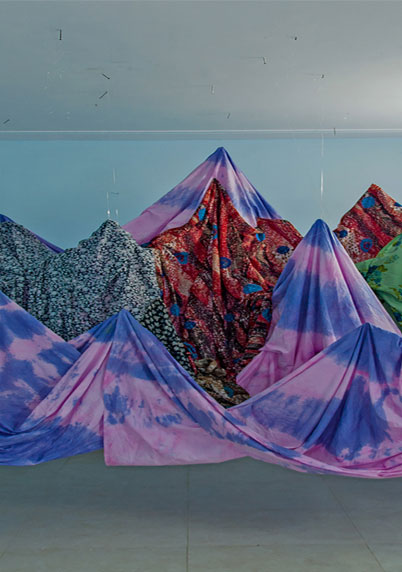

[1] Email correspondence with Anahita Vossoughi, May 2021.
[2] Email correspondence with Minoo Emami, May 2021.
[3] Etty Yaniv, Samira Abbassy: Hybrid Iconography; Reflections on the work of contemporary artists, Art Spiel January, 2021 https://artspiel.org/samira-abbassy-hybrid-iconography/
[4] https://www.guernicamag.com/behbahani_10_1_11/
[5] English poet Percy Shelley heralded poets as “the unacknowledged legislators of the world.” in The Defense of Poetry, 1821.
[6] This poem was published in A Cup Of Sin: Selected Poems by Simin Behbahani, translated by Farzaneh Milani and Kaveh Safa, University of Syracuse Press, 1999. Kaveh Safa said in his introduction: “Injustice has been the primary reason behind Behbahani’s poetry. The war with Iraq (1980-88), the bloodiest since World War II, left more than a million Iraqis and Iranians dead; thousands are still unaccounted for, and thousands more still languish as prisoners of war.
[7] Originally an Arabic verse form dealing with loss and romantic love, medieval Persian poets embraced the ghazal, eventually making it their own. Each couplet was of the same meter and length, and the subject matter included both erotic longing and religious belief or mysticism. https://www.poetryfoundation.org/learn/glossary-terms/ghazal
[8]Anahita Vossoughi, ibid.
[9]Etty Yaniv, ibid.
[10]Jonathan Goodman, Bahar Sabzevari: Gaze and Glance, https://brooklynrail.org/2020/10/artseen/Bahar-Sabzevari-Gaze-and-Glance
[11] The art historian Rosalind Krauss has also described Bellmer’s use of the Doll imagery as a tactic: ‘To produce the image of what one fears, in order to protect oneself from what one fears – this is the strategic achievement of anxiety, which arms the subject, in advance, against the onslaught of trauma, the blow that takes one by surprise.’ (Krauss 1997, p.196.) https://www.tate.org.uk/art/artworks/bellmer-the-doll-t11781
[12] To read about Laura Carrington follow this link https://www.tate.org.uk/art/artists/leonora-carrington-7615
[13] Iran’s Foreign Policy Toward Russia, Central Asia, and the Caucasus, https://link.springer.com/chapter/10.1007%2F978-1-137-07175-0_8
[14] http://new.artreoriented.com/exhibitions/iran-inside-out/

